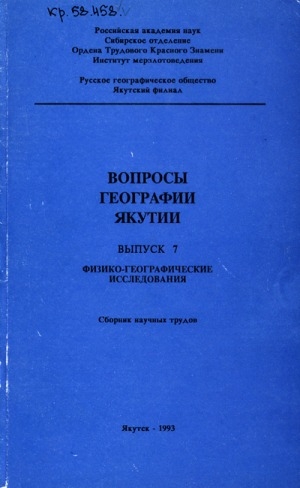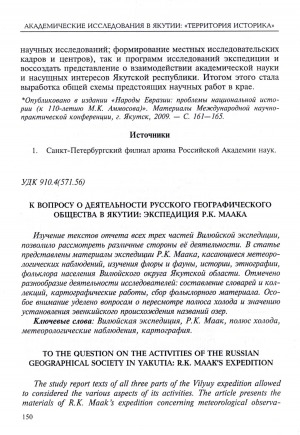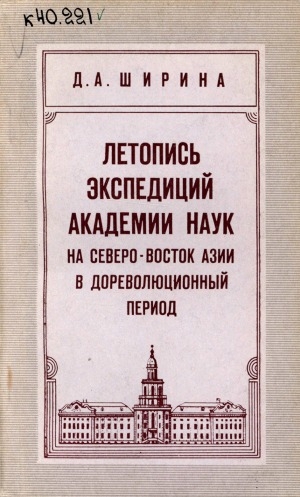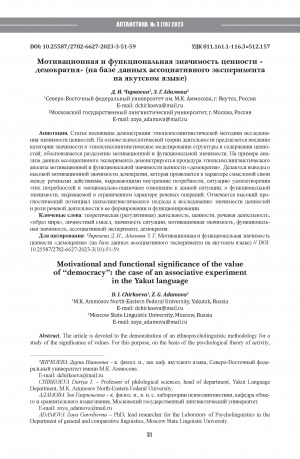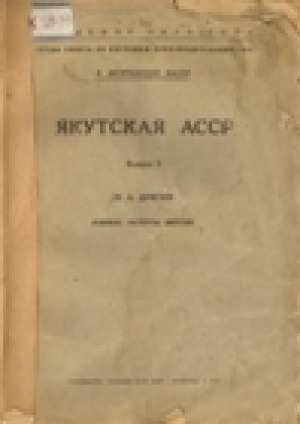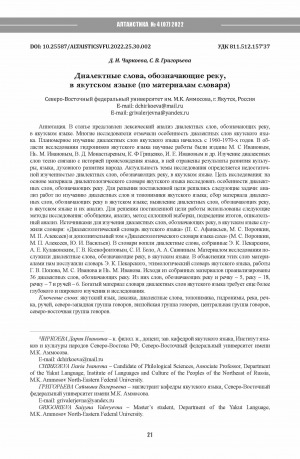Данная статья посвящена 170-летию организованной Сибирским (Иркутским) отделением Императорского Русского географического общества Вилюйской экспедиции (Якутия) под руководством русского натуралиста немецкого происхождения, исследователя Сибири и Дальнего Востока Ричарда Карловича Маака (нем. Richard Otto Maack) с 1853 по 1855 гг. Она содержит также некоторые сведения по Предбайкалью и Забайкалью, полученные во время последующих приамурской (1855-1856) и приуссурийской (1859-1960) экспедиций. Описаны маршрут, сроки, состав экспедиции, и оценен вклад ученого в разные области естествознания и, прежде всего, в изучение позвоночных животных края. Ученым выявлено обитание амфибий и рептилий (4 вида), птиц (121), млекопитающих (34), что сравнительно много на фоне проведенных в Восточной Сибири региональных исследований того времени. По опубликованным в фундаментальном труде ученого ҺВилюйский округ Якутской областиһ [1883-1887] спискам видов птиц выявлено распространение 5 видов куриных (Gallinaceae): рябчика, глухаря, каменного глухаря, тетерева, белой куропатки. Для Забайкалья и Предбайкалья также отмечено обитание еще двух видов: серой и бородатой куропаток. Фазан учитывался Р. К. Мааком только в Приамурье и Приуссурье (Дальний Восток). В общем за полуторавековую историю изучения куриных птиц их видовой состав практически не изменился в районе работ исследователя. В целом же по Якутии он пополнился видами из восточных и южных районов исследуемой территории, обитающими там тундряной куропаткой и дикушей. В масштабах Восточной Сибири в настоящее время дополняет список куриных только фазан как новый вид региона, документально отмеченный по югу Восточной Сибири - в приграничном с Байкальским регионом Восточном Саяне и некоторых местах Забайкалья (пока еще точно не подтвержденных).
The article is dedicated to the 170th anniversary of the Vilyuisk (Yakutia) expedition organised by the Siberian (Irkutsk) branch of the Imperial Russian Geographical Society (1853-1885). It was led by Richard Karlovich Maack (Germ. Richard Otto Maack), a Russian naturalist of German origin and explorer of Siberia and the Far East. It also contains some information on the Pribaikalia and Transbaikalia, taken along the way during the subsequent Amur (1855-1856) and Ussuri (1859-1960) expeditions. The route, dates, and composition of the expedition are described and the contribution of the scientist to various fields of natural science and, above all, to the study of vertebrates of the region is evaluated. Scientists have identified the habitat of amphibians and reptiles (4 species), birds (121), mammals (34), which is relatively large against the background of regional studies conducted in Eastern Siberia at that time. According to the lists of bird species published in the fundamental work of the scientist "Vilyuisky district of the Yakut region" [1883-1887], the distribution of 5 species of Gallinaceous birds (Gallinaceae) in the middle of the XIX century was revealed - Hazel Grouse, Western and Black-billied Capercaillies, Black Grouse, Willow Ptarmigan. For Transbaikalia and Pribaikalia, the habitat of two more species is noted - Gray and Bearded Partridges. The Common Pheasant was accounted for by R. K. Maack only in the Amur region and the Amur region (Far East). In general, over the century and a half of the history of studying Gallinaceous birds, their species composition has practically not changed in the researcher's work area. In Yakutia, it was replenished with species from the eastern and southern regions, living there Rock Partridge and Siberian Grouse. On the scale of Eastern Siberia, only the Pheasant is currently supplementing the Gallinaceous birds list as a new species in the region, documented in the south of Eastern Siberia - in the Eastern Sayan bordering the Baikal region and in some places of Transbaikalia (not yet precisely confirmed).


